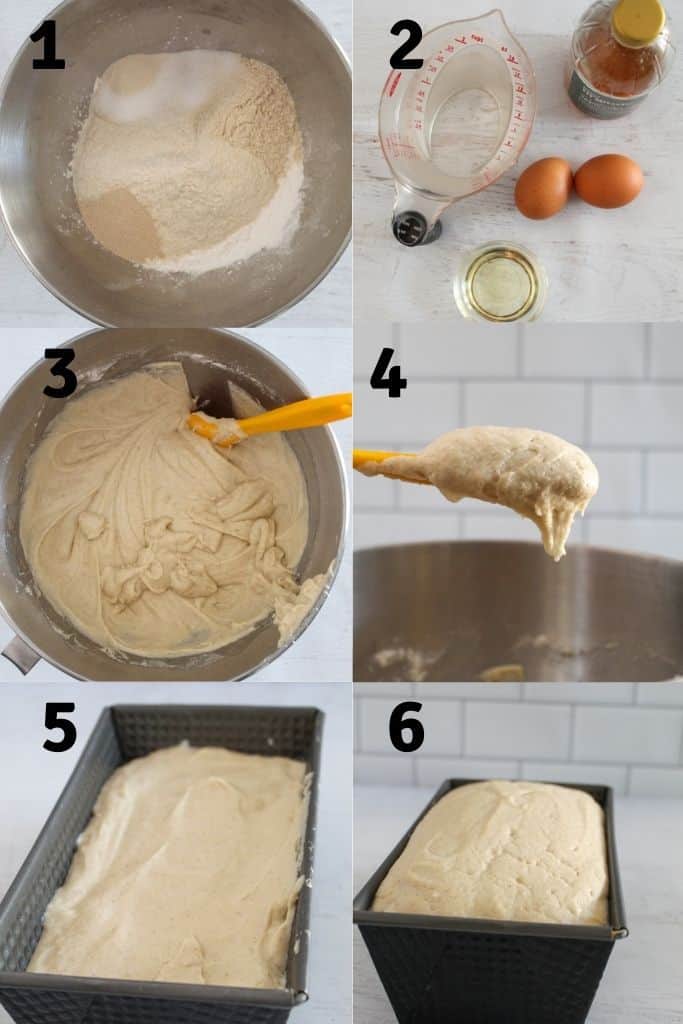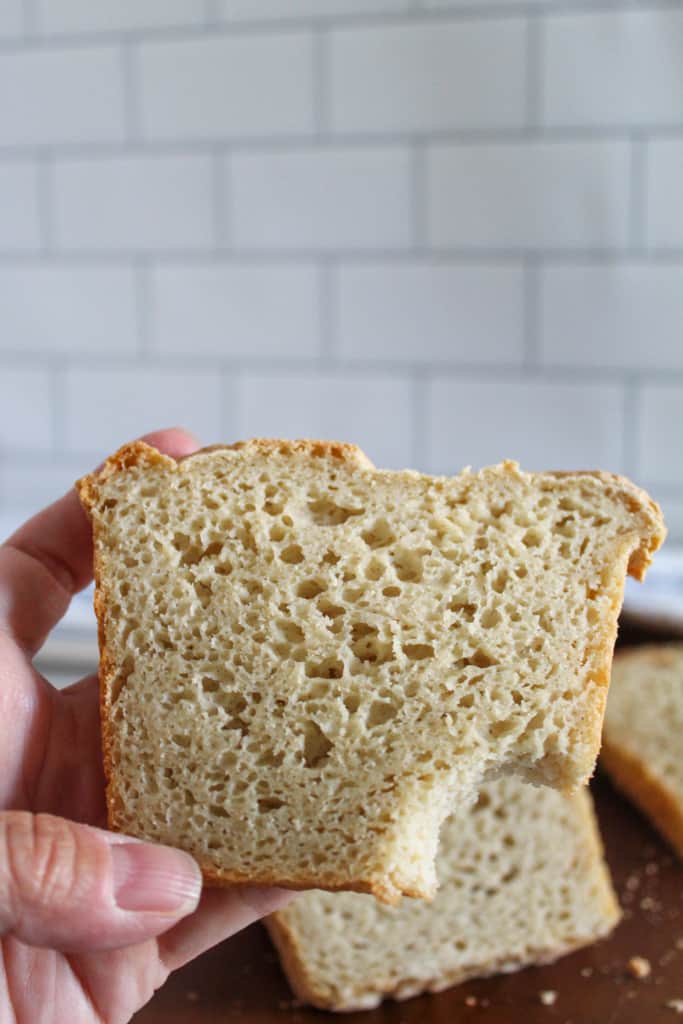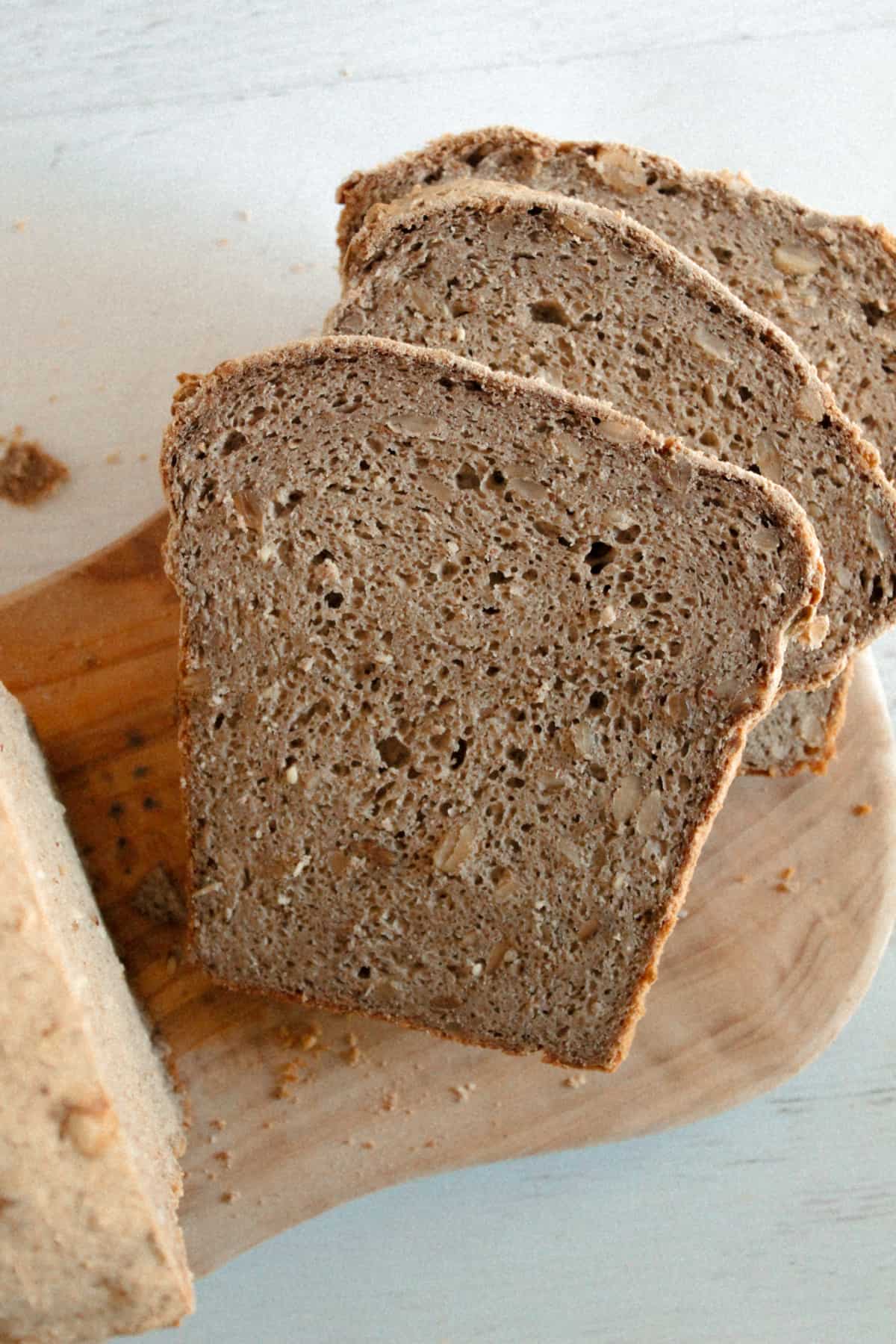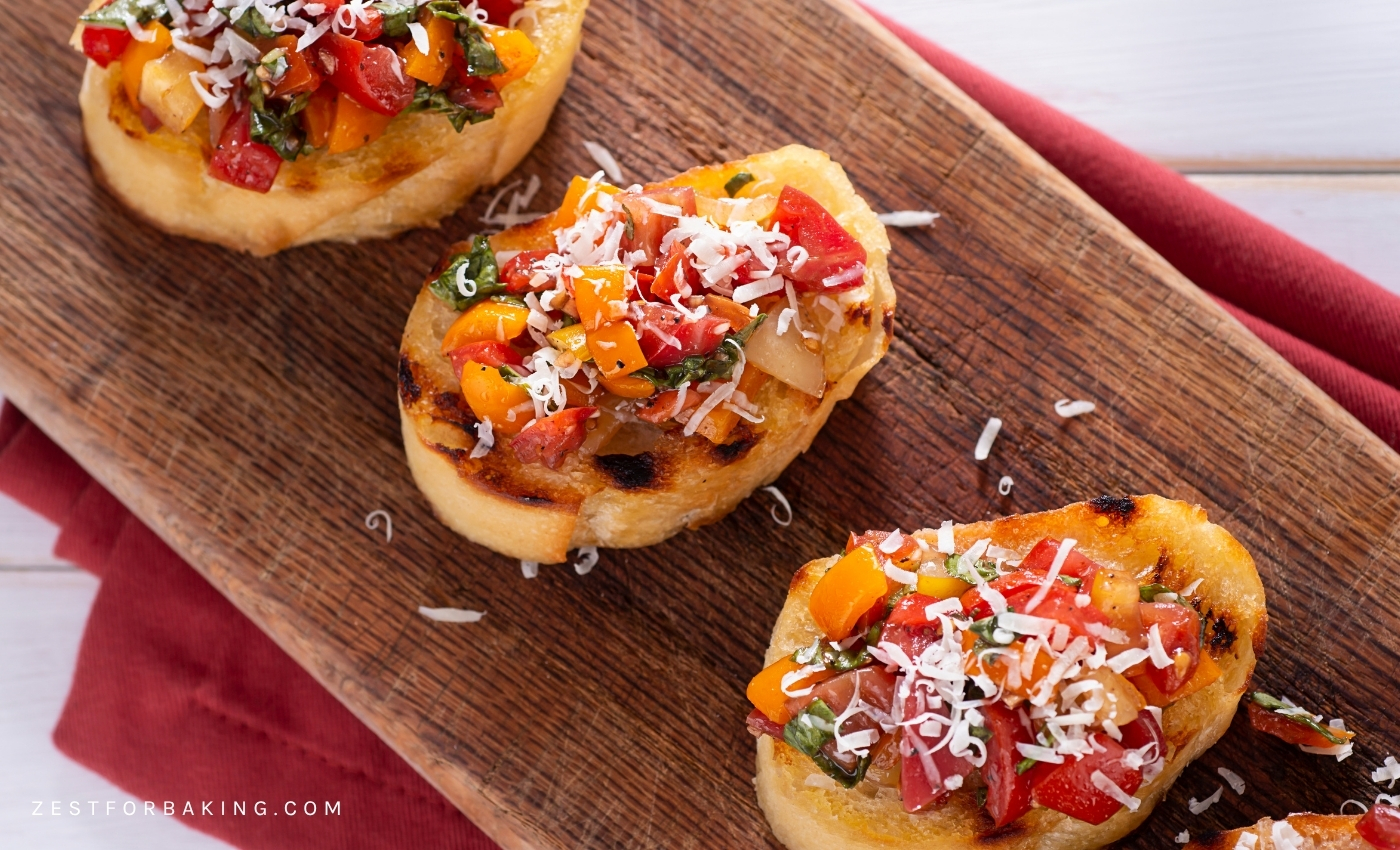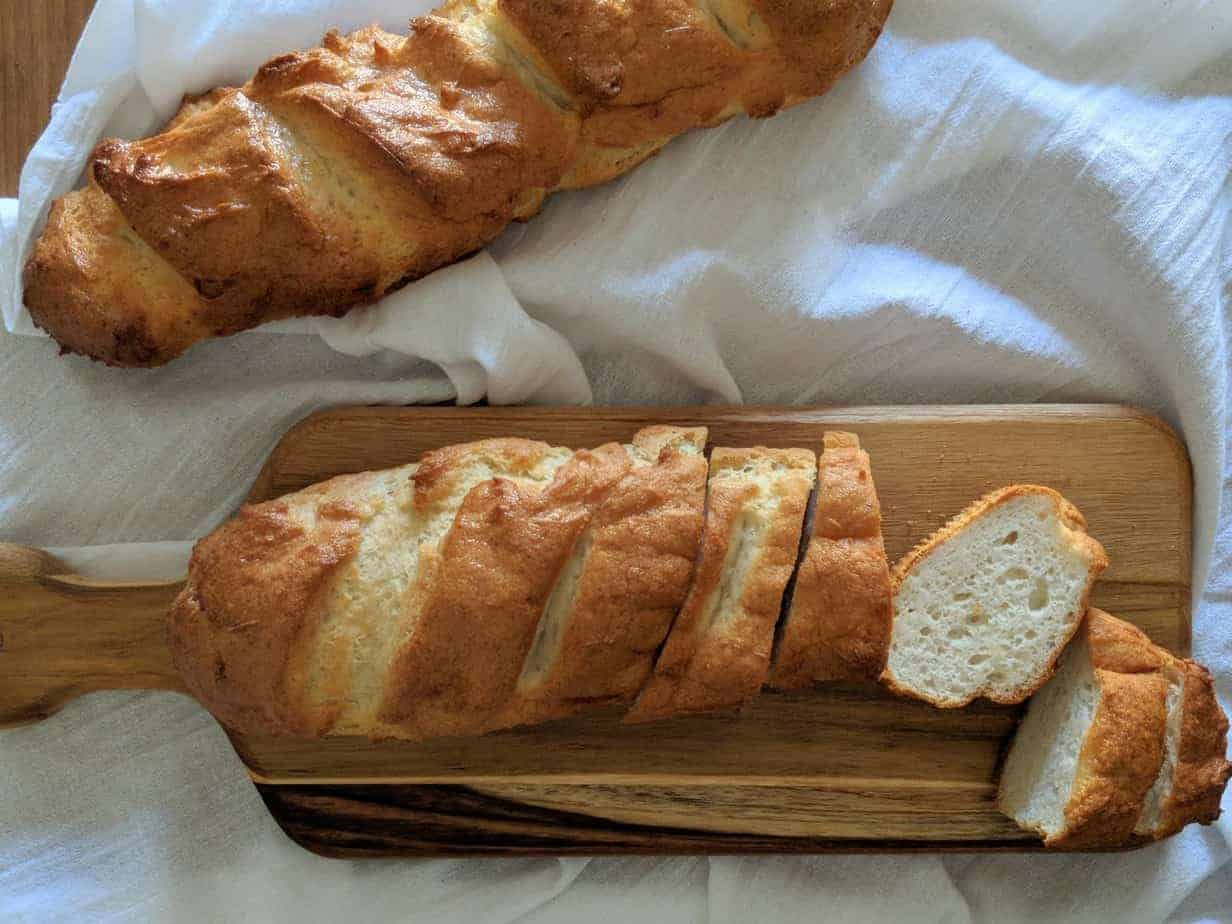BEST Sorghum Bread Recipe: Gluten Free & Dairy Free
If you’re looking for the perfect sorghum bread recipe, this is it! With a full cup of sorghum flour, this bread tastes like a cross between a hearty wheat bread and a sweeter Hawaiian bread. In other words, very mild and ideal for a sandwich.
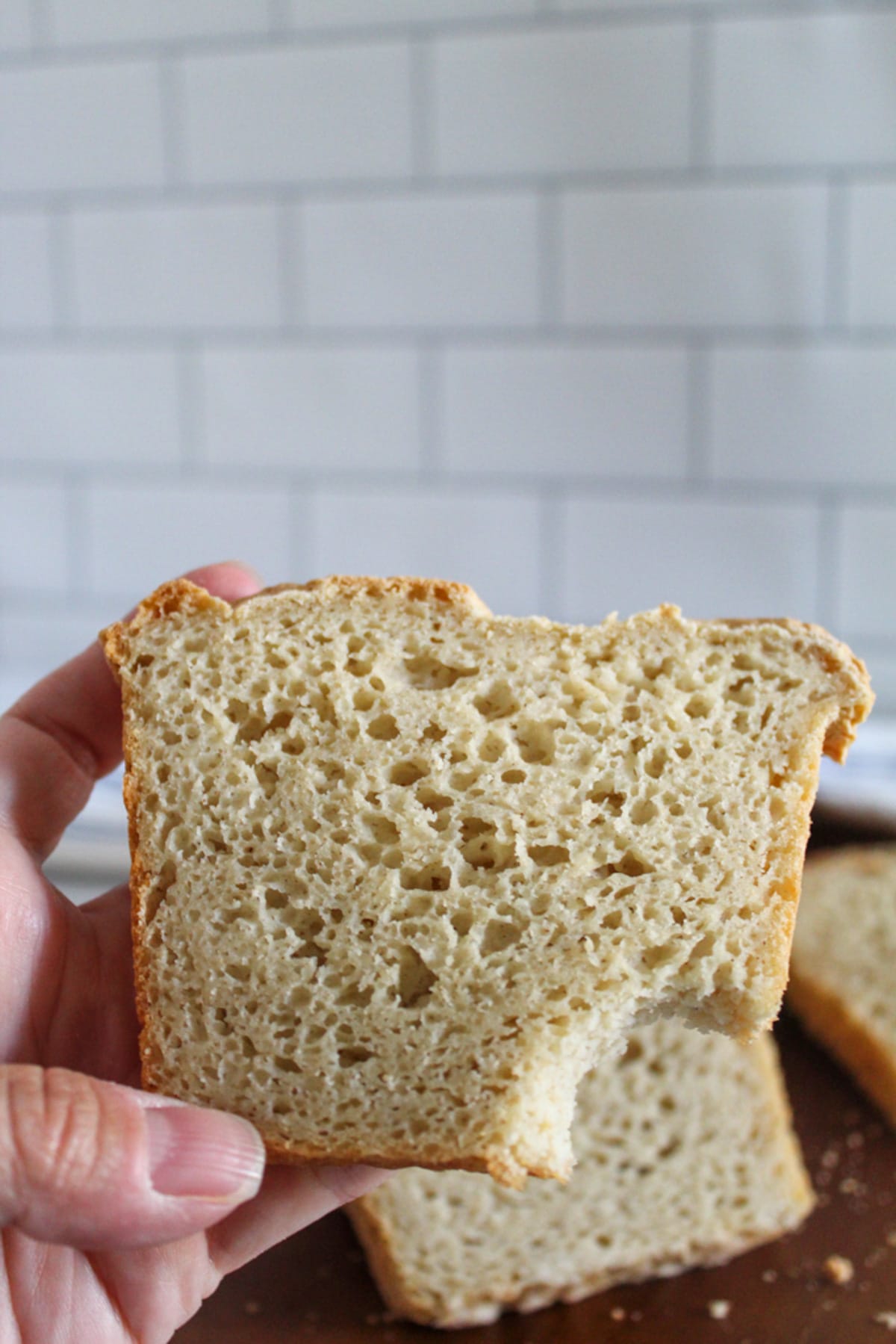
Looking for more gluten-free baking recipes? Check out this gluten free white bread without xanthan gum, this oatmeal bread, this gluten-free French bread, and these gluten free breadsticks.
Table of Contents
Sorghum Bread Recipe at a Glance
It’s not every day that you have both a delicious bread recipe and one that doesn’t require a long prep time. In fact, if you use a stand mixer (highly recommended!), it makes the process even easier. The mixer does all the work for you. In addition to being a somewhat hands-off bread, this easy recipe is perfect for those with celiac disease.
The recipe is dairy free as written and even keeps the sugar to a minimum (need a sugar free bread? Check out this gluten free sandwich bread). After a short, 20 minute rise and 45 minute baking time, you’ll have a delicious yeast bread, ready to sink your teeth into.
Ingredients
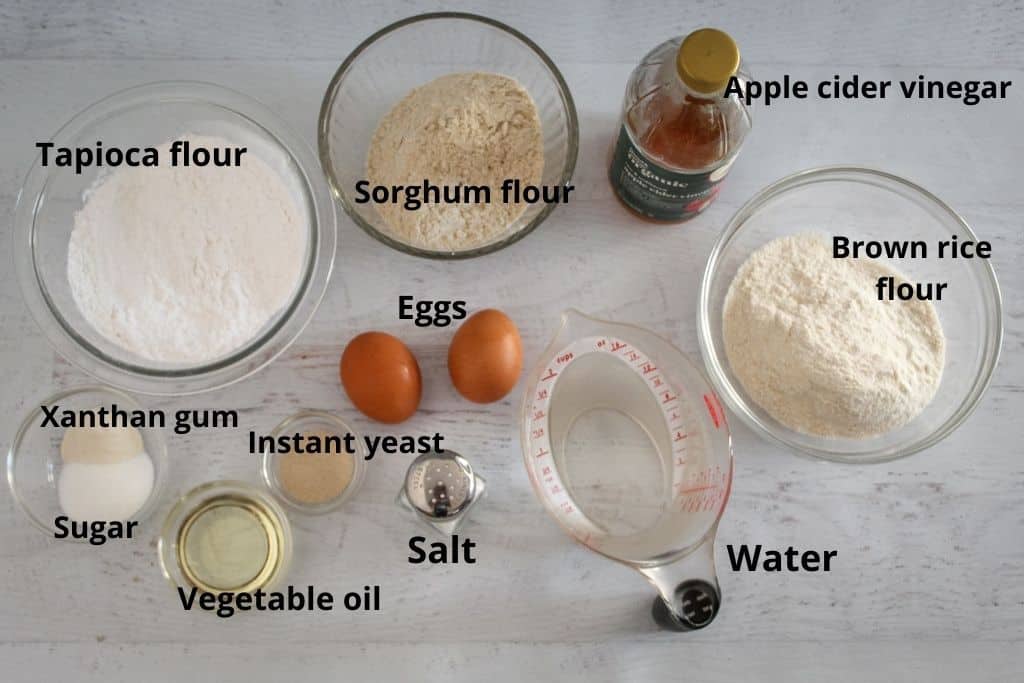
The simple ingredients list includes:
- Sorghum Flour: More on that in the “Sorghum Flour” section below.
- Tapioca Flour: Also called tapioca starch, the starch is needed to balance the flours.
- Brown Rice Flour: This is a very mild flour that works well with the sorghum flour.
- Granulated Sugar: A very small amount of white sugar for a true homemade gluten free bread flavor.
- Xanthan Gum: The xanthan gum is a binder so the bread doesn’t crumble and fall apart.
- Instant Yeast: Yeast helps the bread rise tall.
- Salt: Adds flavor to the bread.
- Water: Use warm water for best results.
- Eggs: Use large eggs to help with texture and consistency of the bread.
- Vegetable Oil: Vegetable oil adds much need fat in the bread dough.
- Apple Cider Vinegar: The vinegar helps with the rise and texture of the crumb of the baked bread.
These ingredients can be found in my Amazon store.
Exact measurements and directions for making the sorghum bread can be found in the recipe card below.
Sorghum Flour
What gluten free flour is mild, balanced in terms of fiber and protein content and the same price as white or brown rice flour?
You guessed it! Sorghum flour!
I’ve worked with sorghum flour quite a bit (see this article on 5 reasons why you’ll love working with sorghum flour) and baked with it just as much – see this delicious banana cake for proof! And one of the reasons it’s a great baking flour to get to know is that it’s incredibly versatile. Millet flour, buckwheat flour and amaranth flour are all very close in composition to it so if you need to substitute these gluten free flours, sorghum would be your go-to.
As for where sorghum comes from – it’s milled from the sorghum grain kernel. It’s an ancient grain that is found in Asian countries, Australia and Africa. Fortunately it’s readily available both online and in many stores.
Step By Step to Sorghum Bread
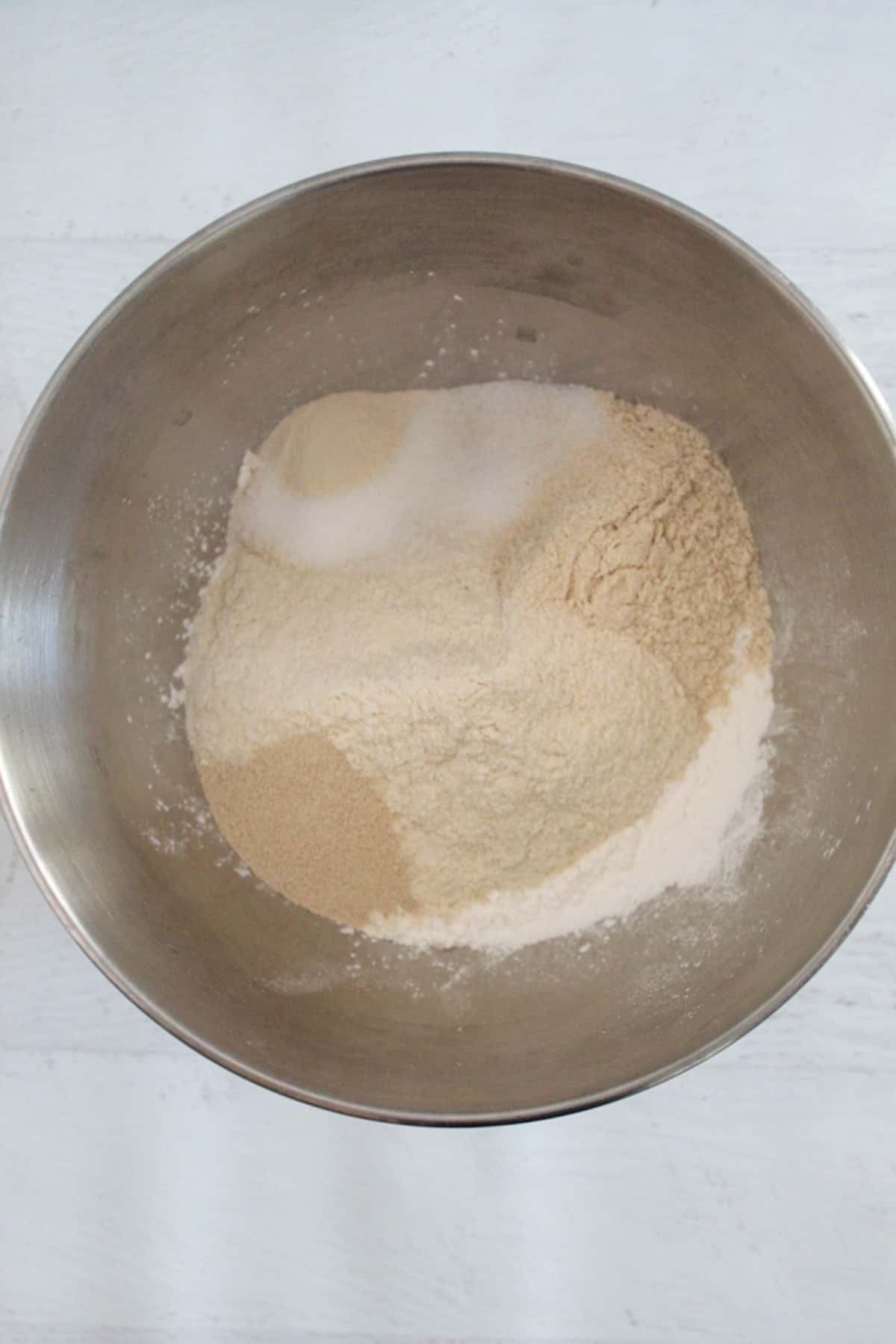
STEP ONE: Add the dry ingredients to the large mixing bowl and mix until combined.

STEP TWO: Add the wet ingredients to the dry.
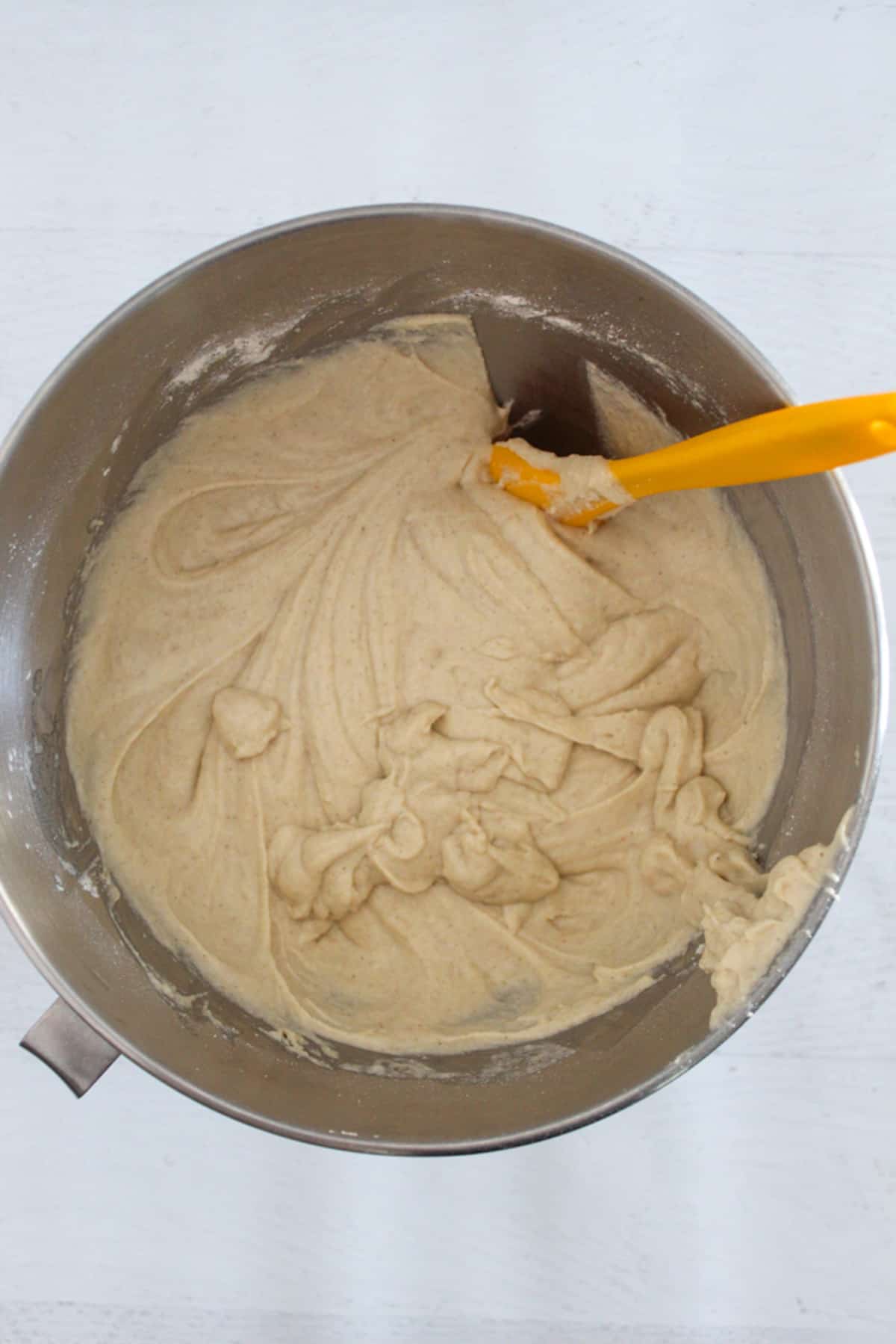
STEP THREE: Mix on medium speed until combined.
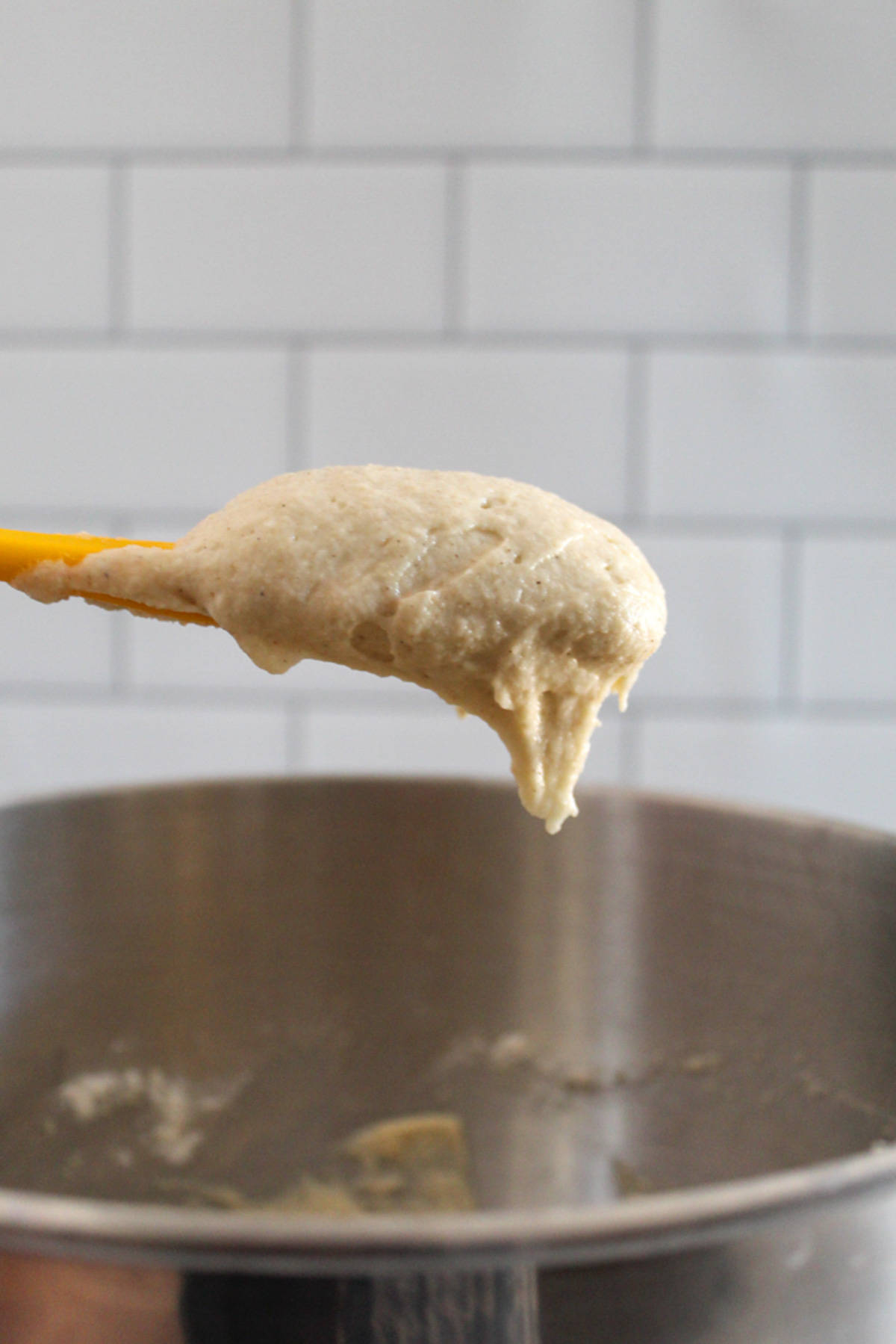
STEP FOUR: The batter will look fluffy and will not drip off a spatula.

STEP FIVE: Scrape the thick batter into a greased 8″ x 4.5″ loaf pan and set aside to let the dough rise in a warm place for 20-25 minutes.
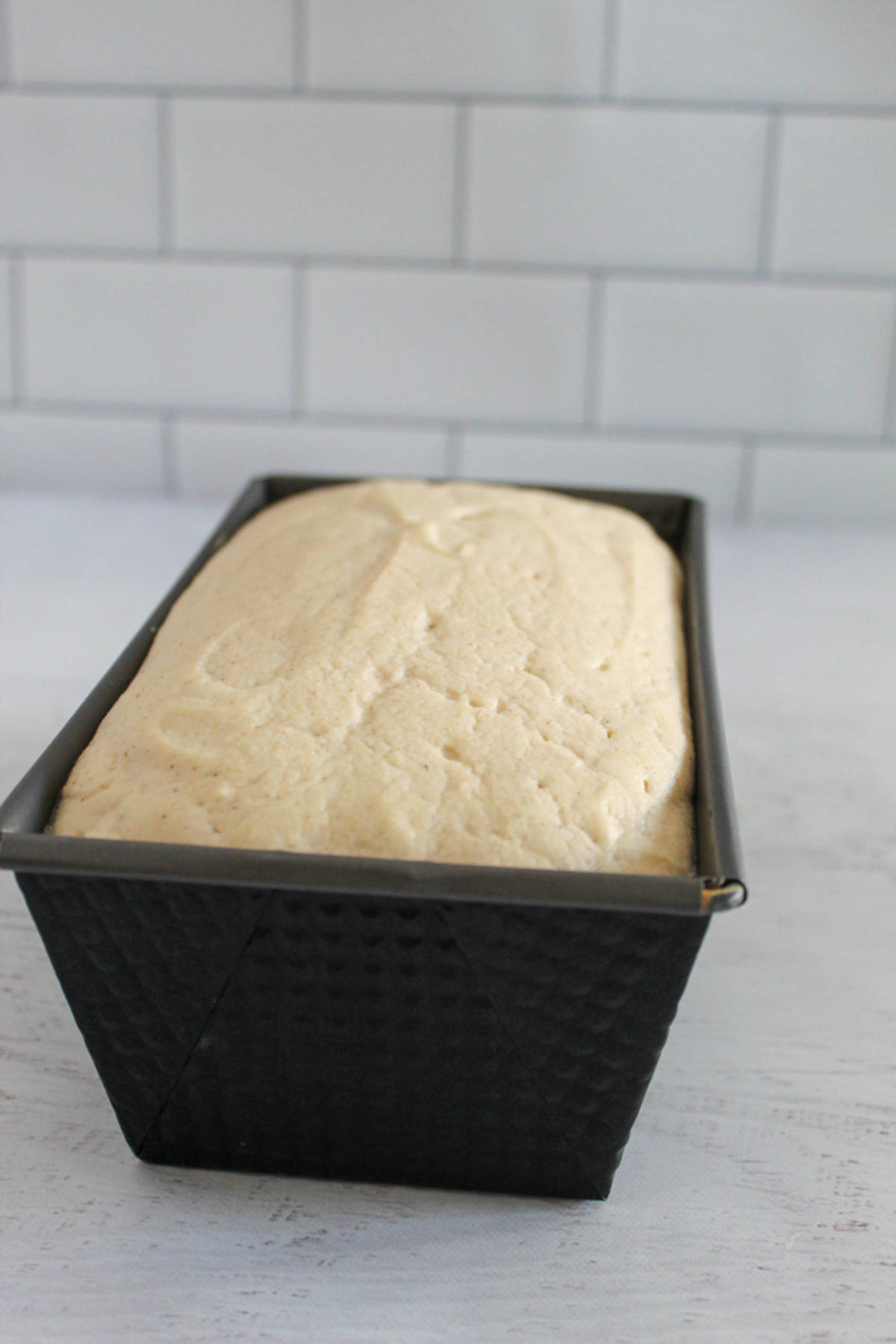
STEP SIX: The bread dough is ready when it barely crests the top of the baking pan. Bake the bread at 350F until an instant-read thermometer registers between 205-210F or about 45 minutes.
Storage
Just as the same with this buckwheat bread, this sandwich bread and this oatmeal bread, let the bread cool completely before slicing. Once the bread has cooled completely, place it in an airtight container or use plastic wrap to seal the entire loaf and store it at at room temperature for up to 2 days. Any longer than that and you’ll want to freeze it for a longer shelf life.
Slice the entire loaf before placing it back into a freezer-safe, airtight bag and freezing for up to 1 month. Slices can go directly into the toaster from frozen.
Substitutions
If you need to make substitutions in the recipe, my Substitutions Guide for Gluten Free Baking is an excellent reference for more in depth, why, how and when for using substitutes. Here are some options for the bread:
Sorghum flour – This is the main ingredient in this bread and I would not recommend substituting it.
Tapioca flour – As a substitute for tapioca starch, corn starch or potato starch can be used.
Brown rice flour – White rice flour may be used for the brown rice flour.
Sugar – Use coconut sugar for the granulated sugar.
Xanthan gum – As a substitute, use psyllium husk powder or another xanthan gum substitute listed here.
Instant yeast – Active dry yeast may be used but it will need to be proofed in 1/2 cup of the 1 1/2 cups water first.
Eggs – Use a chia egg substitute or flax egg for the eggs.
Vegetable oil – Melted coconut oil or olive oil may be used.
Tools & Equipment
The tools needed to make this bread include:
- Stand mixer or large mixing bowl and a hand mixer
- 8″x4.5″ baking pan
- Rubber spatula
- Sharp bread knife
All of these tools are in my Amazon store.
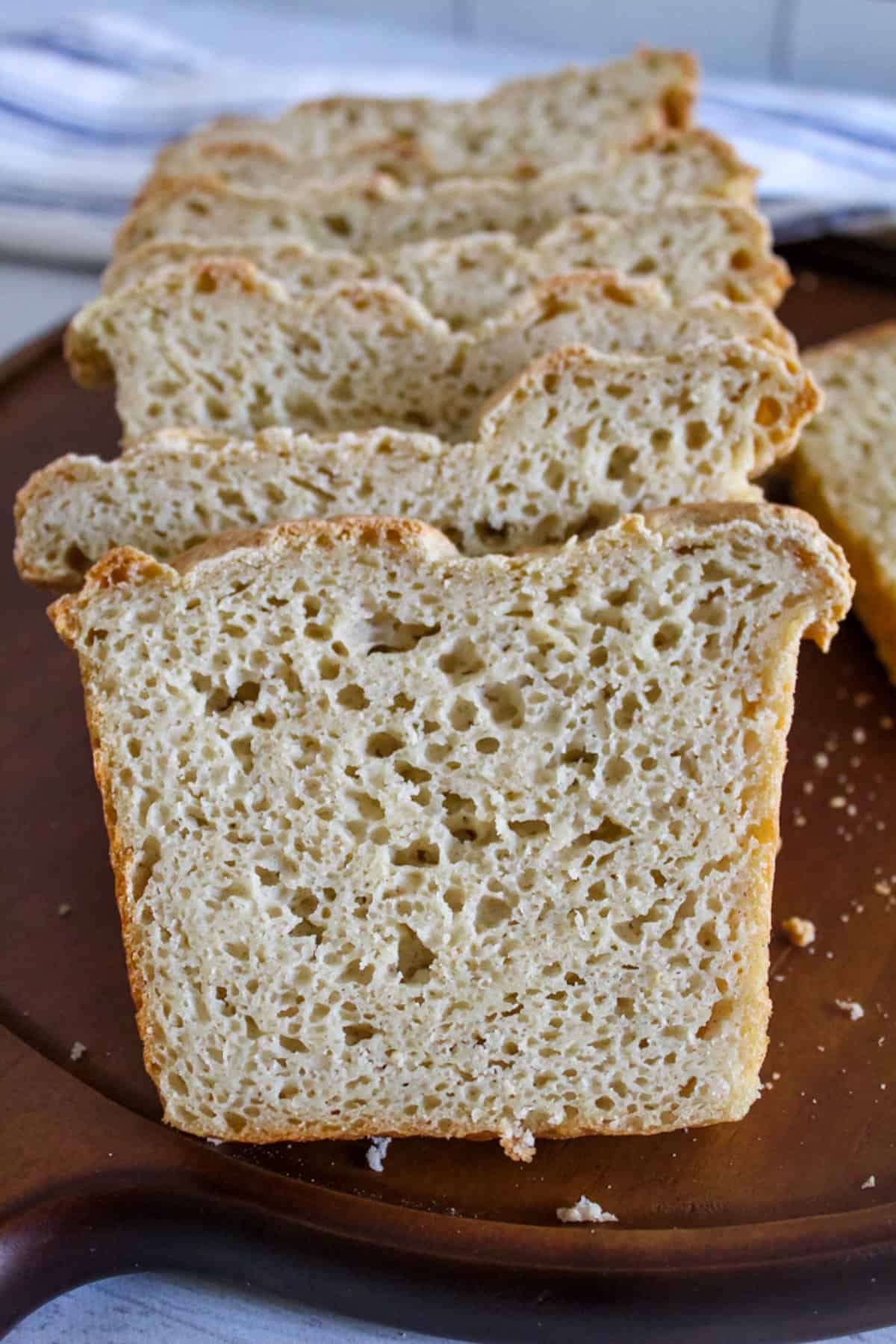
Baking Pro Tips
These tips will ensure that you have the absolute best, lightest, fluffiest bread ever.
Weigh the ingredients
Few things will be a game changer for your baking like the method you use to measure the ingredients. Instead of using cups, use a digital scale to weigh the flour in grams. I explain this in a little more detail in this baking masterclass, but it has to do with how much flour actually gets added to the recipe. Digital scales are one of the best investments you’ll ever make for successful bread baking.
Room temperature ingredients
Another very important rule of thumb is to make sure your ingredients are at room temperature. Unless the recipe states differently, water, oil, flours, eggs, even sugars should be room temperature. This is another topic I cover in depth in the Masterclass, but warmer ingredients mix better creating a better textured end result.
Watch the rise time
There is a range offered for the rise time, but you’ll want to watch it carefully because as soon as it comes close to the rim of the pan, it will need to bake within a few minutes. If left to rise too long, two things may happen: 1. The bread will overflow in the pan while rising or 2. The bread will overflow in the oven, while baking. Either way, a mess!
Use an instant-read thermometer
You may remember or even seen people tapping the top of a loaf of gluten yeast bread to check for doneness… if it sounded hollow, then it’s done, if not, you’d let it bake longer.
Ah the good ole’ days!
With gluten free bread baking, we have to rely on more advanced equipment. This handy instant read thermometer lets us know if our bread is done or not. It may sound complicated but it’s really very easy to use – you’ll simply remove the bread from the oven, open this thermometer, stick it in the middle of the loaf and watch the temperature climb. If it hits between 205-210 F, then it’s done. If not, place it back into the oven to bake a little longer.
It’s not tapping, but you can’t beat accuracy!
FAQs & Troubleshooting
Is instant yeast like bread machine yeast?
What’s the best way to store this bread?
I found tapioca flour, where is tapioca starch?
Can I use a sugar substitute?
Can I use an egg substitute?
More Yeast Bread Recipes
Did you make and love this recipe? Give it your review and ![]() rating below! And make sure to follow me on Instagram, Pinterest and Facebook too!
rating below! And make sure to follow me on Instagram, Pinterest and Facebook too!
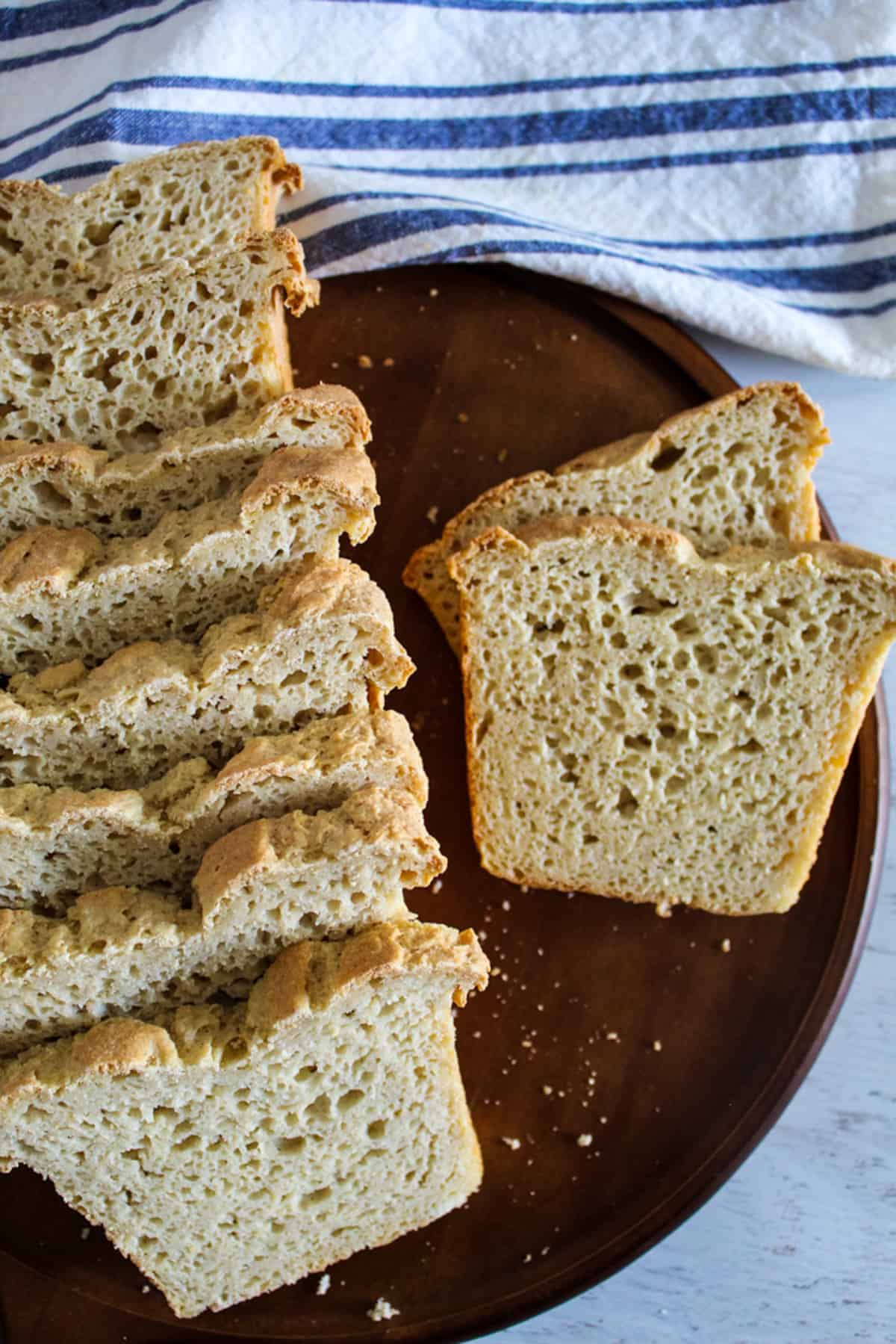
Best Sorghum Bread Recipe: Gluten Free
Ingredients
Method
- In the bowl of a stand mixer, add the sorghum flour, tapioca flour, brown rice flour, sugar, xanthan gum, salt and yeast. Mix for 30 seconds to combine.
- Add the water, eggs, vegetable oil and apple cider vinegar to the dry ingredients and mix for 30 seconds. Stop machine and scrape batter down.
- Mix on medium speed for 3 minutes.
- Prepare 8" x 4.5" baking pan by spraying with cooking spray.
- Scrape batter into the pan and set aside to rise for 20-25 minutes, just until the batter comes close to the rim of the pan.
- Preheat oven to 350 F. Bake bread for 45 minutes. Remove from the oven and test for doneness with an instant read thermometer. Bread is done when thermometer reaches 205-210F.
- Cool on a wire rack for 10 minutes. Remove from the pan to finish cooling completely before slicing.
Video
Notes
- Measure ingredients by weight.
- Use room temperature ingredients.
- Bread should rise just to the top of the rim.
- Use an instant read thermometer to test for doneness.
Original pictures (resized)

